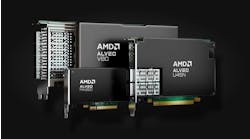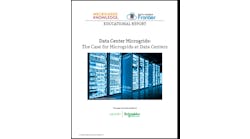Looking Ahead After a 30-Year Data Center Career
During this era of free-flowing venture capital, I worked for one of the most well-funded tech startups in Seattle. We were building enterprise data centers concurrently in Chicago, Dallas, San Francisco, Seattle, Denver, Washington, DC, and New York. As the dot-com era ended, I was fortunate to find my way to Sabey Data Centers, where, over 18 years, I grew from a Project Manager to a General Manager and Vice President of Leasing.
Change is the Only Constant
As one can imagine, I've witnessed a significant evolution in data centers over my career. Colocation data centers grew out of the computer rooms that businesses built and operated before the dawn of the Internet as we know it. Data was strictly business back then, and these centers were fortresses built to enable comparatively primitive accounting, transaction, and inventory systems. Accessing the world's information in the palm of your hand, storing photos of your family in the cloud, and watching cat videos on YouTube were all still firmly in the realm of science fiction.
When I first found myself in the industry, networking speeds were much slower. Dial-up baud rate speeds were in use, and the fastest communications circuit was a T1, which we'd laugh at today! Some in the industry today aren't familiar with dial-up modems or the handset connection method, but veterans of communications will never forget that distinct sound
As the digital age took hold and data usage exploded worldwide, computer rooms became inefficient drains on company resources and gave way to the emerging colocation data center industry. Companies purchased more expensive and complex power and cooling equipment ever and hired experts to run them as infrastructure requirements grew exponentially. As a result, expenditures and headaches accelerated, and executives gradually abandoned the "my equipment; my site" paradigm. Instead, colocation, and eventually cloud computing, emerged as solutions to allow them to refocus their capital, talent, and real estate on their core business.
Other benefits became apparent with the shift to multi-tenant data centers. For example, downtime plummeted when IT infrastructure was isolated from users; fewer people mucking around with and near equipment resulted in better uptime. By now, nobody has the appetite to move backward. A doctor's office or law firm should be just that, not a data center.
As the industry continues to evolve, there is a push to bring computing resources closer to users via the "edge." It's a broad term, but often people imagine a node, or a small phone booth-sized data center, on every street corner. However, I suspect that even "edge" data centers will locate somewhat centrally, serving larger communities. For instance, in New York City, there may be one in Chelsea and one in Soho.
Looking Ahead
Over my career, the most significant change in data center infrastructure has been a push toward efficiency, mirroring society's increasing awareness of our environmental impact. These days, we are using 50%-75% less power to process and cool much more advanced storage and compute requirements. In addition, we are better stewards of our water supplies. Looking ahead, I believe nuclear microgrids show great promise, eliminating transmission losses when collocated very near data centers.
A more recent industry trend I have noticed is the shift away from the main "NFL" cities for optimal data center locations to second and third-tier cities. We also see an uptick of entities moving to more rural areas, such as eastern Washington state or upstate New York near St. Lawrence Seaway. These nontraditional areas often offer tax incentives, better power availability and cost, and more land to build on.
Today, dozens of companies are designing, constructing, and operating data centers. One thing is for sure: everyone is working to improve the formula and doing so as the target perpetually changes. As a result, scalability and flexibility have never been more critical.
There's no end in sight! Tech drawdowns may lead the headlines, but society generates the data equivalent of multiple Libraries of Congress daily. Entire medical facilities are digitizing; your complete medical history will soon be available on a chip embedded in your hand. Autonomous aircraft will scoop you up and drop you off for a night on the town. Your refrigerator will order milk and eggs when they run low. And all this data will need to be processed and stored. It's a great time to be involved in tech, and colocation data center construction will continue for the foreseeable future.
John Ford is a Vice President of Leasing for Sabey Data Centers and General Manager of SDC Seattle. Ford is a telecommunication professional with 30 years of experience in technical sales and marketing, data center design, and executive management for enterprise customers and data carriers. Contact Sabey to learn more about their data center solutions.






